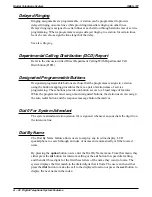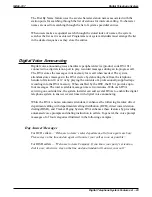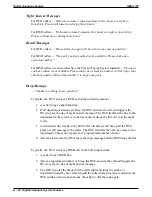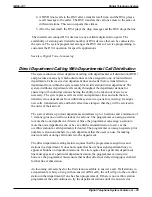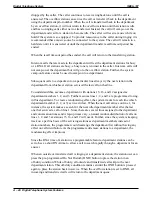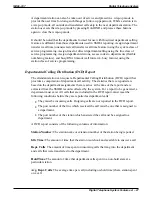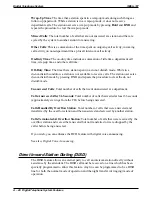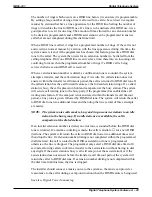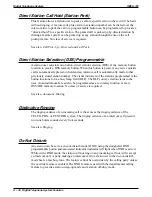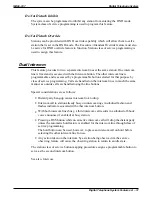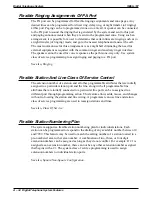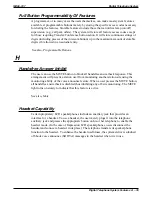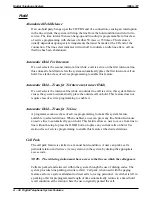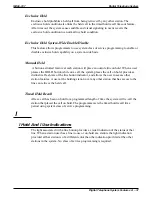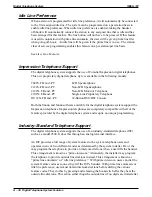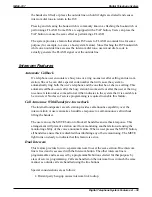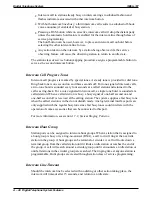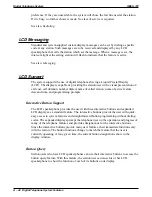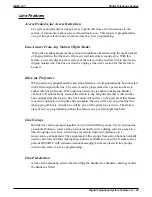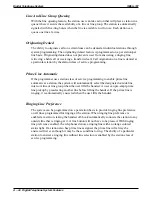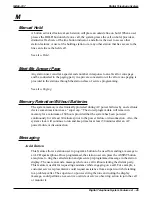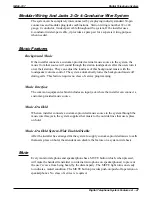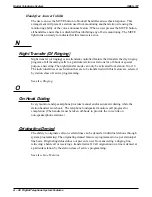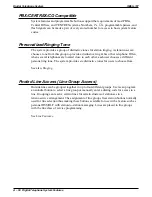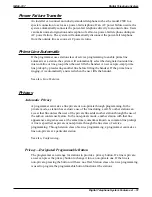
Hold
Abandoned Hold Release
If an on-hold party hangs up at the CO/PBX end of a connection, causing an interruption
in the line current, the system will drop the line from the hold condition and return it to
service. The time interval between hang-up and line-drop is programmable in line class
of service programming with choices of either 50 msec or 350 msec. This feature is
usually dependent upon special arrangements that must be made at the CO end of the
connection. The line select indicator will turn off to indicate an idle line after a call on
that line has been abandoned.
Automatic Hold For Intercom
If a user selects the second intercom line while a call is active on the first intercom line,
this automatic hold feature lets the system automatically place the first intercom call on
hold. Use station class of service programming to enable this feature.
Automatic Hold—Transfer To Intercom (Answer Hold)
If a user selects the intercom line while an outside line call is active, this system feature
causes the system to automatically place the outside call on hold. This feature does not
require class of service programming to enable it.
Automatic Hold—Transfer To Line
A programmer can use class of service programming to make this system feature
available to selected stations. When enabled, a user can press any line button and cause
an active line to automatically go on hold. This feature allows a user to move from line to
line without having to press the HOLD button to place any current calls on hold. Use
station class of service programming to enable this feature at the desired stations.
Call Park
The call park feature is similar to a manual hold condition. A user can park a call a
particular station and retrieve it at any station in the system by dialing the appropriate
access code.
NOTE: The retrieving station must have access to the line on which the call appears.
Calls are parked and retrieved within the system through the use of dialing codes. The
system provides nine parking circuits (orbits). Call park, when used with the paging
features, allows a system attendant to direct calls to roving personnel. A call that is left in
a parking orbit for preprogrammed length of time automatically returns to a timed hold
recall condition at the station where the user originally parked the call.
Digital Telephone System
IMI66–107
A – 36 Digital Telephone System Features
Summary of Contents for Air Impact DSU
Page 2: ...Printed in U S A GCA47 157 ...
Page 30: ......
Page 112: ......
Page 192: ...Digital Telephone System IMI66 107 3 80 System Programming ...
Page 283: ......
Page 284: ......
Page 285: ......
Page 286: ......
Page 287: ......
Page 288: ......
Page 289: ......
Page 290: ......
Page 291: ......
Page 292: ......
Page 293: ......
Page 294: ......
Page 295: ......
Page 296: ......
Page 297: ......
Page 298: ......
Page 299: ......
Page 300: ......
Page 301: ......
Page 302: ......
Page 303: ......
Page 304: ......
Page 305: ......
Page 306: ......
Page 307: ......
Page 308: ......
Page 309: ......
Page 310: ......
Page 311: ......
Page 312: ......
Page 313: ......
Page 314: ......
Page 315: ......
Page 316: ......
Page 317: ......
Page 318: ......
Page 319: ......
Page 320: ......
Page 321: ......
Page 322: ......
Page 323: ......
Page 324: ......
Page 325: ......
Page 326: ......
Page 327: ......
Page 328: ......
Page 329: ......
Page 330: ......
Page 331: ......
Page 332: ......
Page 333: ......
Page 334: ......
Page 335: ......
Page 336: ......
Page 337: ......
Page 338: ......
Page 339: ......
Page 340: ......
Page 431: ......
Page 436: ......
Page 437: ......
Page 438: ......

